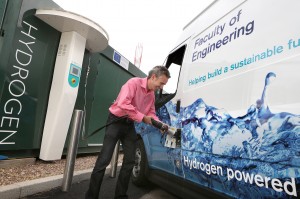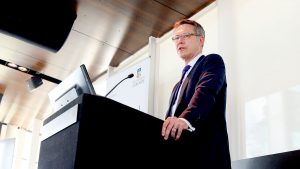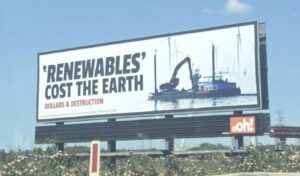The ACT government has expanded its renewable energy ambition and plans to bring $180 million in investment in renewable energy-to-hydrogen energy storage technology to the national capital, including the first hydrogen-fuelled fleet in Australia.
The initiative was announced by environment and climate change minister Simon Corbell on Tuesday, who said the investment would include a $55 million hydrogen “electrolyser” and $125 million invested in R&D into renewables-to-gas from the developers of one of the ACT’s contracted wind farms.

Corbell said in a statement the partnerships would position the ACT as a leader in a growing market, creating opportunities for local researchers and businesses.
“Hydrogen energy storage from 100% renewable energy is an important complementary technology with huge commercial potential,” Corbell said.
“This is another example of the ACT Government delivering jobs and investment for our community, and benefiting from our large-scale auctions.”
The investment has been made possible through the recent 200MW “next generation” renewables energy auction, which will also co-fund the rollout of 36MW of battery storage in 5,000 Canberra homes and businesses.
Neoen and Megawatt Capital (developers of the Hornsdale Wind Farm) will invest $55 million in partnership with Siemens and Hyundai to establish a 1.25MW hydrogen electrolyser, which converts electricity to hydrogen.
The initiative will include a refuelling station and service centre and an initial fleet of 20 hydrogen fuelled cars, including a technical support and research program. Siemens will also establish an office in Canberra’s renewable energy innovation precinct.
Union Fenosa, the developer of the Crookwell Wind Farm, will invest $125 million including a research and development partnership with the Australian National University and ActewAGL Distribution.
This will focus on renewable energy power to gas (ReP2G), investigating efficiencies in the production of hydrogen from renewables and how it can then be introduced to the ACT gas network or provide support to the electricity network.
A pilot testing facility will also be established in the ACT to produce hydrogen from water using the ACT’s 100% renewable electricity supply.
“Now that the ACT is set to have 100% renewable electricity by 2020, which will reduce our greenhouse gas emissions by 40% on 1990 levels, we can focus on reducing other sources of greenhouse gases and maintaining our position as a leader in energy innovation,” Corbell said.
“One of the next great challenges is our transport sector which will overtake electricity to be 60% of our city’s emission in 2020.
“The future for transport is clear – it is renewable and it is electric. Both batteries and hydrogen energy storage technologies may have important roles to play as we electrify our vehicle fleets, and have an electricity grid based on 100% renewable energy.
“Hydrogen technologies could be an important complementary technology to battery storage with several advantages as an energy storage medium.
“Hydrogen has a much higher energy density and, in the case of electric vehicles, it is much faster to fill a tank with hydrogen than to charge a battery from the grid. A higher energy density also means a longer driving range.
“Like batteries, hydrogen can be used to support a high penetration renewables grid drawing power when renewable production is excessive and producing power when renewable production is low. The only by-product of this process is pure water which can be recycled through the system.”







